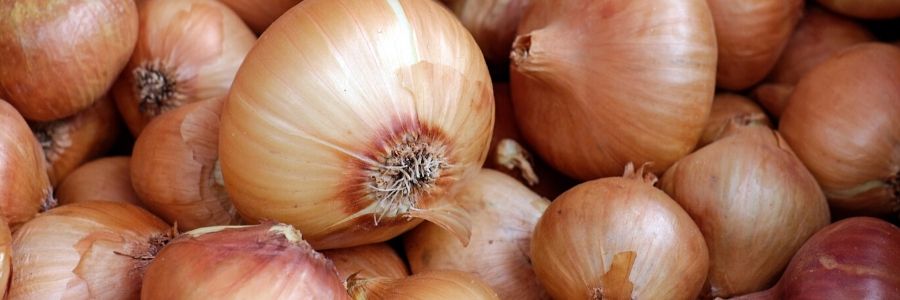Onion farming – Planting, Growing, and Harvesting Onions: An onion is one of the most favorite vegetables that is used in our kitchens across the world.
Growing of an onion plant is very easy and profitable. You can opt to do onion farming on a large scale or just in your small garden.
Onions are basically cold-season crops and very easy to grow. Today we are going to look at the onion farming guide. You will find onion planting techniques, ideas, and tips.
Best Soil for Planting Onions
Onions can be grown in a wide range of soils from sandy soil, loam soil to clay soil with good drainage. Therefore onions can be planted in any type of soil.
Best Climatic Conditions for Onion Growing
Onions are adaptable to different climatic conditions. The onions are adapted to a temperature range of 13° C to 24° C at the vegetative stage, 16° C to 21° C at the bulbing stage and 30° C to 35° C at maturity and harvest.
The best condition for onion growth is when there are no extremes of heat, cold and excess rainfall.
Onion farming
Onion Site Preparation
Select a good location with full of sunlight, a place where the onion will not be shaded by other plants.
Ensure the soil is loose, well-drained, and rich in nitrogen. A rocky, compacted and clay-heavy soil does not do well with onions as it will affect the bulb development.
Mix the soil with manure or compost before planting to ensure the soil has enough and constant nourishment for the onions to produce big bulbs.
When planting you can also mix the soil with nitrogen fertilizer.
How to Plant Onions
You can grow onions from onion sets or onion seeds. Onion sets are small onion bulbs obtained from onions.
If you are planting onions on your small garden, you can use onion sets as they mature faster compared to the seeds. But if it is on large scale, and you have a long season the best option is to go for onion seeds.
If planting from seeds, grow the seeds in a nursery at least 6 weeks before transplanting to the garden.
When planting onion sets, the ideal spacing is between 2 inches and 6 inches apart. Also do not bury them more than 1 inch under the soil.
If planting from onion seedlings, space the plants between 4 to 5 inches apart. You can add straw mulch between the rows of onions to help retain the moisture as well as stifle weeds.
How to Care for Onions
It is not all about growing onions and leaving them. You will need to take care of the onions. You will need to look at them more like a leaf crop rather than a root crop. If you want big bulbs, fertilize them every few weeks with nitrogen.
Stop fertilizing when onions start pushing the soil away and when the bulbing process is starting. Don’t push the soil around the onions; allow the bulbs to emerge above the soil.
If you have used mulch, there is no need for constant irrigation.
Irrigation is very important at the time of transplanting, light irrigation should be done on the third day of planting and thereafter irrigation can be done at an interval of 7-10 days depending on the type of soil and season.
How to Harvest Onions
When the plant stops producing new leaves and loots, it shows the onion bulb has reached maturity and it’s time to harvest.
Harvesting of the onions will depend on a number of factors, the planting season, market price of the onion, condition of the crop as well as cultivator decision.
When harvesting onions. Pull any onion that has started showing flower stalks as it shows that they have stopped growing.
If you want to store the onions for longer periods, ensure they are well and fully developed.
How to Store Onions
Onions can stay for long when stored properly.
After harvest, let the onions to dry for several weeks before you can store them in a root cellar or any other storage area.
Spread the onions out on an open off the ground to dry.
After the outer part has dried, store the mature, dry-skinned bulbs in a cool and dry place. Ensure that they do not have bruises, as this might encourage rotting.
How to Store Onions for 6 Months
Marketing of Onions
When harvesting is almost ready, you can start looking for market. You can supply to the local market, retail stores, or local wholesale stores.

Steve George is Blogger, a marketer and content writer. He has B.A. in Economics from the University of Washington. Read more about Mzuri Mag.
